







|
BEA WebLogic Integration 9.2 is a unified solution for integration business systems within an enterprise. WebLogic Integration provides a development and run-time framework that unifies all the components of business integration--business process management, data transformation, trading partner integration, connectivity, message brokering, application monitoring, and user interaction--into a single flexible environment. WebLogic Integration 9.2 reduces the cost of management and operations by providing highly reliable, stable, scalable, and mission critical integration solutions.
WebLogic Integration combines the divergent pieces of the business integration picture, including ERP, CRM, legacy applications, business users, supply chains, and trading partners, by providing a versatile development environment that delivers rapid business integration with simplified production and management.
WebLogic Integration is part of the WebLogic Platform that provides functionality for businesses to use to develop new applications, create both businesses and web services, integrate them with existing systems, streamline business processes, and extend e-business infrastructure through portal gateways.
WebLogic Integration provides a single environment to build an integrated enterprise application whether it is for business process integration (from business process modeling to integrating enterprise adapters), custom application development using robust Web services and controls, or developing a portal to provide employees, partners, and customers with an integrated view of applications and data.
Figure 1 illustrates the WebLogic Platform that comprises of multiple components that you can use independently, or in combination, as required for your application.
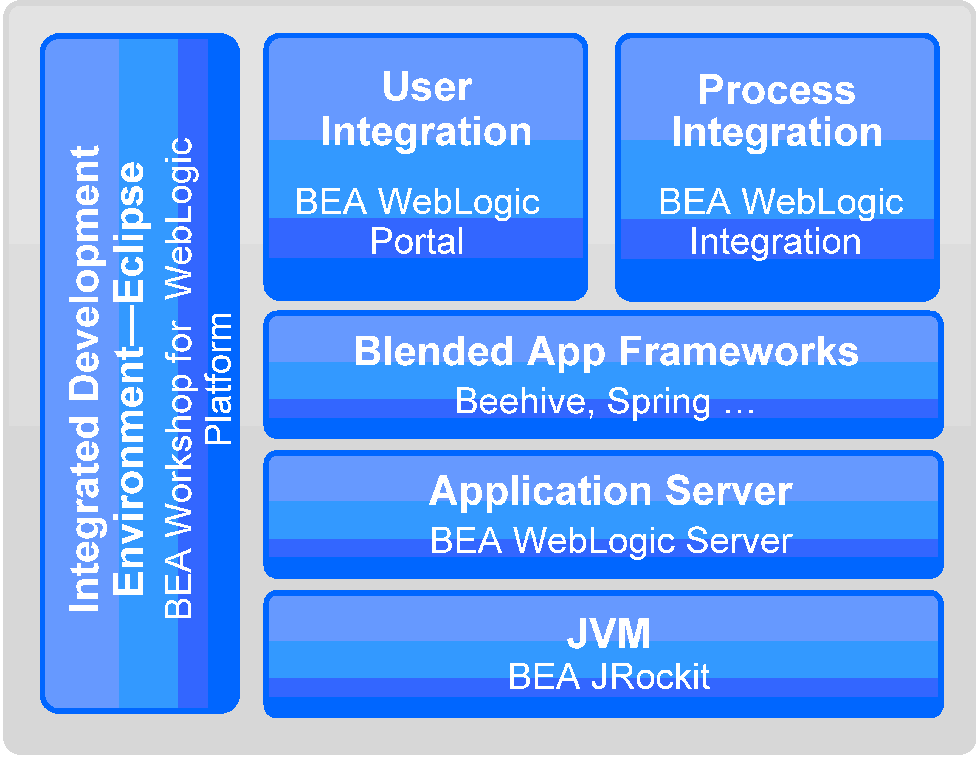
BEA WebLogic Server, the industry-leading J2EE application server, provides the critical infrastructure needed to develop integrated solutions, including security, transaction management, fault tolerance, persistence, and clustering.
Leveraging WebLogic Server as the underlying deployment environment, WebLogic Integration uses Web services to integrate distributed systems inside and outside an organization and utilizes the BEA Workshop for WebLogic Platform framework to simplify application development.
WebLogic Integration works seamlessly in the BEA Workshop for WebLogic Platform environment. WebLogic Integration uses the power of BEA Workshop for WebLogic Platform to provide a robust set of tools to develop and extend integration applications. WebLogic Integration provides graphical tools you use to edit your business processes, and human interaction task plans. These tools are available in the same BEA Workshop for WebLogic Platform environment as your controls, Web services, and portal-building tools as shown in Figure 2.
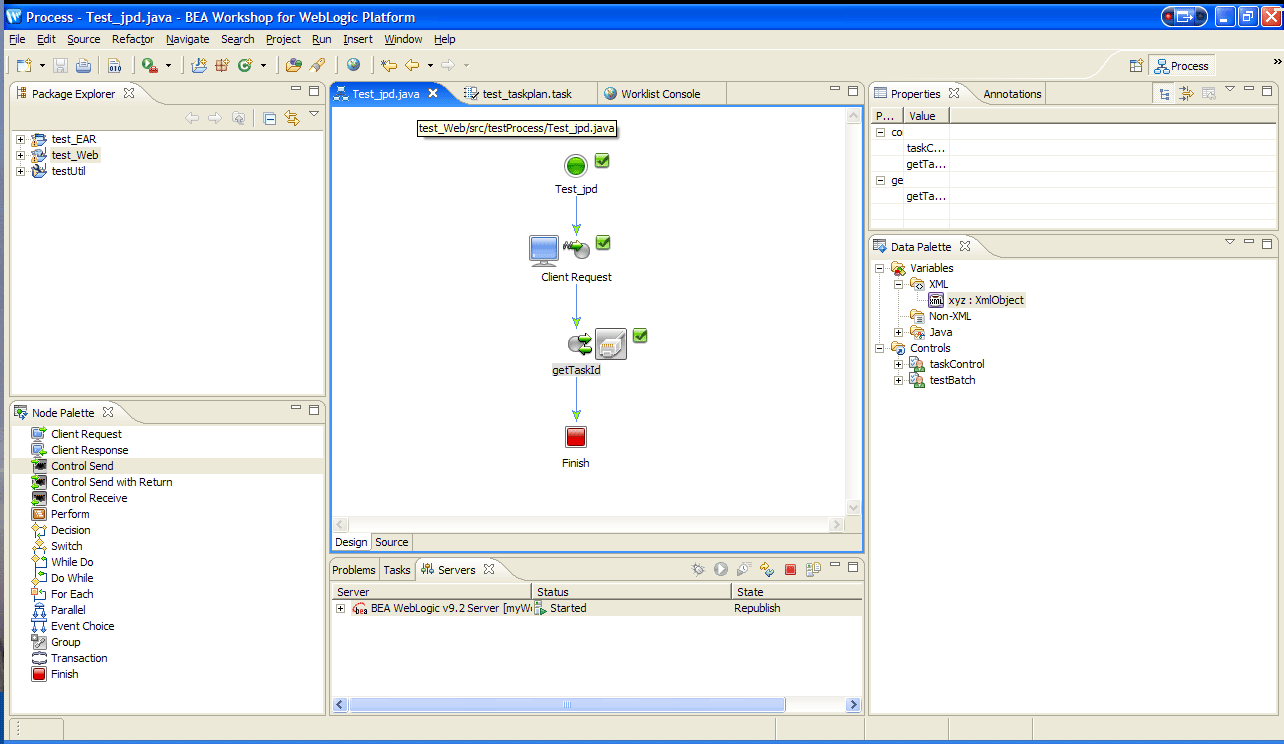
While WebLogic Integration provides a robust set of general purpose tools, your integration solution will require some of your own custom behavior. You may write application logic or expose business processes to the user for human tasks such as business approvals. You may customize the user interface that your user's see when providing the business approvals. You may choose to build a Web-based application on top of your integration application that provides a custom web portal for your users. BEA's common application framework allows you to develop all these components of your solution in the same environment. This is where the WebLogic unified platform can provide you with an ease-of-use advantage.
In the same framework and the integrated development environment, you can define business processes, use Web services, access the J2EE layer for specialized application logic, and use NetUI and Portal resources to allow your user to interact with the business process. Once you build your integration application, you can stay within the IDE to build your user interface. You can use the JSP editor to create forms for data entry and use Page groups to orchestrate the flow of information across multiple Web pages. You can use Portal to host your web interface and customize the user experience. The Eclipse-based BEA Workshop for WebLogic Platform framework for development, integration and portal applications includes the following benefits as listed in Table 1:
Modern businesses operate today in a diverse environment. They interact with a wide variety of clients, both inside and outside of the enterprise, and they rely on disparate systems and processes to power their business activities. In this kind of environment, businesses face an integration challenge. To fully maximize their resources, businesses strive to bring together their internal systems and processes to gain operational efficiency, and they strive to extend those systems to increase revenue. Gaps exist between business integration needs and the tools available to fulfill IT requirements.
Whether your starting point is business process integration (from business process modeling to integrating enterprise adapters), custom application development using robust Web services and controls, or developing a portal to provide employees, partners, and customers with an integrated view of applications and data, you have one environment to build your integrated enterprise application.
BEA Workshop for WebLogic Platform represents rapid integration with BEA Workshop for WebLogic Platform.

By providing access to enterprise resources such as messaging, adapters, and integration controls coupled to business process modeling, human interaction workflow modeling, and data transformation, the WebLogic Integration environment equips IT staff with the means to quickly implement and bind business processes to IT resources without specialized knowledge of the deployment environment.
Within the BEA Workshop for WebLogic Platform framework with its robust Web services and controls architecture, WebLogic Integration supports a business process layer of abstraction and a common language for requirements gathering, for validating implementation, and for monitoring runtime execution. By bridging the gap between the development and integration environments, WebLogic Integration cuts through the accumulation of proprietary integration technologies and makes the integration effort easier and less costly.
WebLogic Integration optimizes enterprise integration by recognizing and reflecting the following design principals:
With a common environment that recognizes that code must be written for integration solutions and that applications require integration to communicate, WebLogic Integration enables the reuse of technical skills across the entire life-cycle of building, integrating, and deploying applications. The following section outlines the key WebLogic Integration features available in the BEA Workshop for WebLogic Platform environment.
AquaLogic Service Bus is enterprise infrastructure software. It is a key product in the Service Infrastructure family of configuration-driven infrastructure software, targeted at the implementation, deployment and on-going operations of service oriented architectures (SOA).
AquaLogic Service Bus brings together the functionality of an Enterprise Service Bus with service management functionality in a single unified product targeted at deploying SOA with configuration-driven integration of services and applications. This converged approach delivers a scalable, intelligent messaging, routing and transformation layer supporting heterogeneous end-points, integrated with capabilities for service registration, monitoring, and lifecycle management.
AquaLogic Service Bus supports the following message types: SOAP 1.1, JMS with headers, IBM WebSphere® MQ with native headers, Un-enveloped XML, Raw Data, text, and SOAP with attachments. AquaLogic Service Bus supports the following transport protocols: HTTP, HTTPS, HTTP/SOAP, JMS, FTP, SMTP, and File based protocols. MQ is supported via foreign JMS provider. It also supports BEA WebLogic Tuxedo and EJB.
AquaLogic Service Bus integrates seamlessly with BEA products - WebLogic Server, WebLogic Integration, WebLogic Portal, AquaLogic Data Services Platform™, and WebLogic Adapters™ - for service creation, consumption and orchestration.
WebLogic Integration 9.2 can be leveraged by AquaLogic Service Bus as a service end point. WebLogic Integration business processes and composite applications can act as business services (service providers) or as service clients (service consumers). Configuring WebLogic Integration as a service client can be done by importing the service client WSDL from AquaLogic Service Bus into WebLogic Integration, generating a JWS control, and adding a node in the JPD to invoke the service. Exposing WebLogic Integration to AquaLogic Service Bus can be done by generating the WSDL file from the existing JPD and registering with AquaLogic Service Bus as a business service. WebLogic Integration can also interface via FTP, Email, or File event generators or controls. These services are registered in AquaLogic Service Bus.
BEA now offers AquaLogic Integrator, a cost-effective solution to build, connect and manage integrated process services. AquaLogic Integrator delivers the best solution for IT to integrate, deploy and manage process-driven services inside and outside the enterprise, by combining the power and flexibility of BEA WebLogic Integration for process integration with the high-performance stateless mediation of BEA AquaLogic Service Bus.
For more information, see the AquaLogic Service Bus 2.5 documentation.
WebLogic Integration contains an Eclipse-based IDE framework, that in turn contains many perspectives such as the Process and Task Plan perspective. Each perspective has their own Editors, Views, Resources, Projects and Facets.
WebLogic Integration provides a set of enhanced enterprise integration-specific capabilities within the Workshop environment that are designed for improved developer productivity. WebLogic Integration provides the following design-time and runtime integration features as listed in Table 2:
WebLogic Integration contains an IDE framework based on Eclipse 3.1.2. When you create a WebLogic Integration application, you will use the following elements in Eclipse:
The Workbench refers to the development environment window. The Workbench provides a central place for creation, management, navigation, and control of various workspace resources. It can house several projects. You can work on several projects simultaneously as in Figure 4, without re-opening the IDE for every type of project.
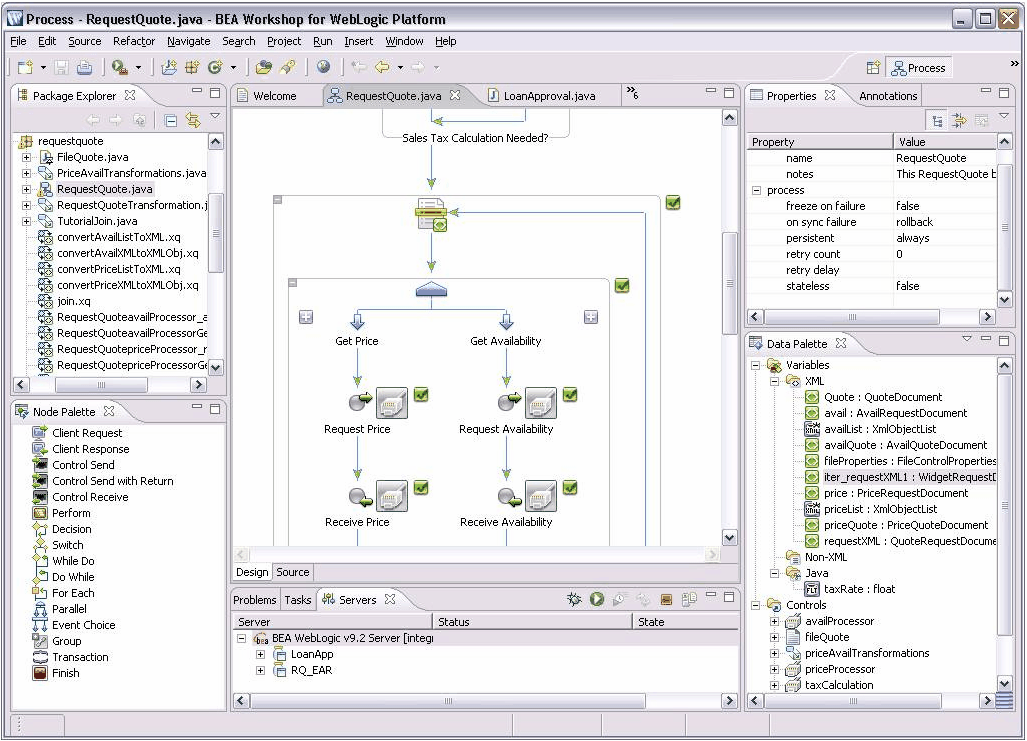
The Workspace is the root directory which holds the various projects, folders, sub-folders, files, libraries, and other artifacts. It also houses a .metadata folder containing the Eclipse log files and plug-in folder for the Eclipse workspace as shown in Figure 5.
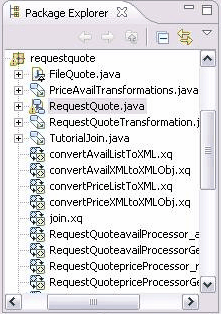
The Editor opens a specific type of file and allows you to edit the content. It also helps you to visualize the file content as required. You can open multiple editors but only one can be active at a time in a workbench. Editors are stacked by default, but you can tile them and thereby even view them simultaneously. You can associate different files with different editors. Double click a file to open the file and invoke its associated editor.
BEA Workshop for WebLogic Platform IDE supports special editors such as:
These editors are available in the central area of the workspace as in Figure 6.
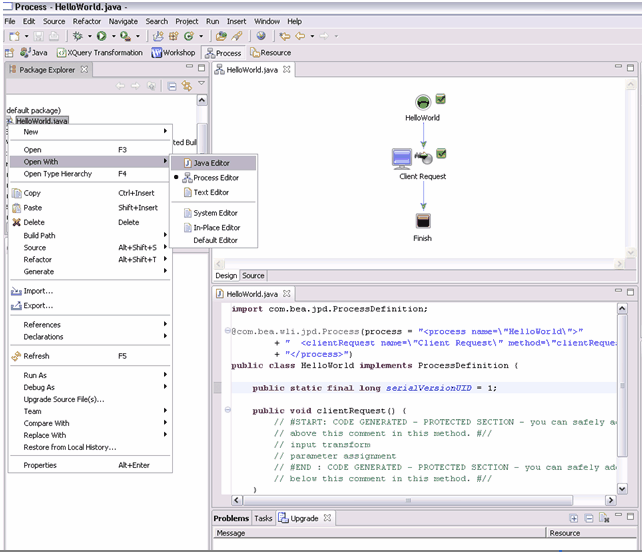
Views support editors and provide an alternative presentation of workbench resources. You can use these views to easily navigate through the resources. Every View has its own menu, and in most cases contains tool bars as well. A view can appear alone, or stacked with other views.
Some of the standard Eclipse views are:
Use Package Explorer and Navigator to view projects and source files as in Figure 8.
Some of the BEA Workshop for WebLogic Platform specific views are:
The Views support Editors and allow you to present and navigate through information using various methods as shown in Figure 7.
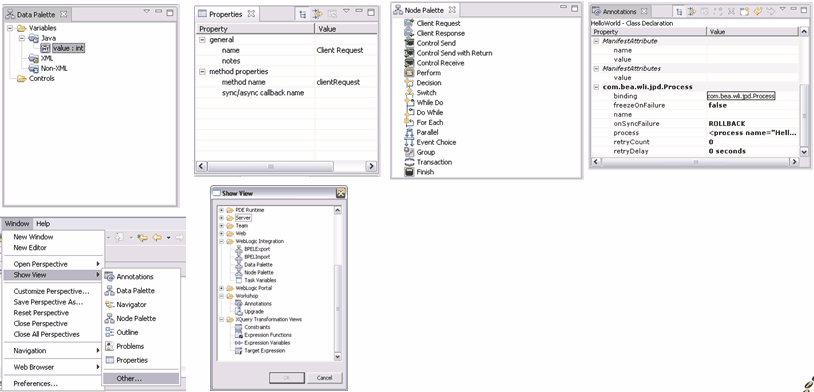
A Workspace houses three types of resources - Projects, Folders and Files. A Project is a collection of files and folders. A Project is a container within which you can organize the various resources related to the project. Every project is associated with a metadata file called .project. This file contains information such as project name, referenced projects, associated validators/builders, and applied facets.
Resources are organized in a tree-like structure. The Workspace contains projects. Every project contains folders with multiple files.
You can view projects using the Package Explorer as in Figure 8.
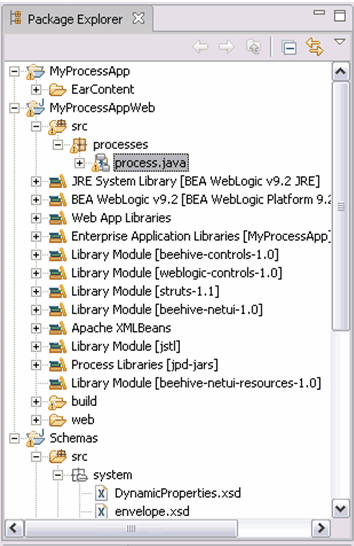
When you create a Project, you need to specify the type of the project to determine the capabilities of that Project. For example, you need to add the libraries, set the various compiler options, decide the various publishing tasks, set the build path, add or remove various validators, builders, and processors. You can define a Facet that contains all these details instead of manually setting this every time you create a project. When a project is created, you can apply the specific facet and set all these details for that project.
Each WebLogic project has two core facets:
You can add and remove project capabilities using facets. Facets are pre-configured into projects using the process application wizard. Add and remove facets as in Figure 9.
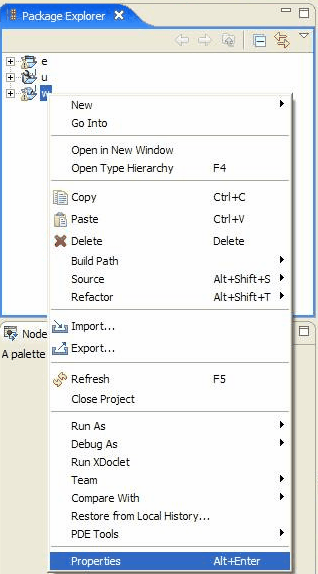
Select Properties to proceed to Figure 10.
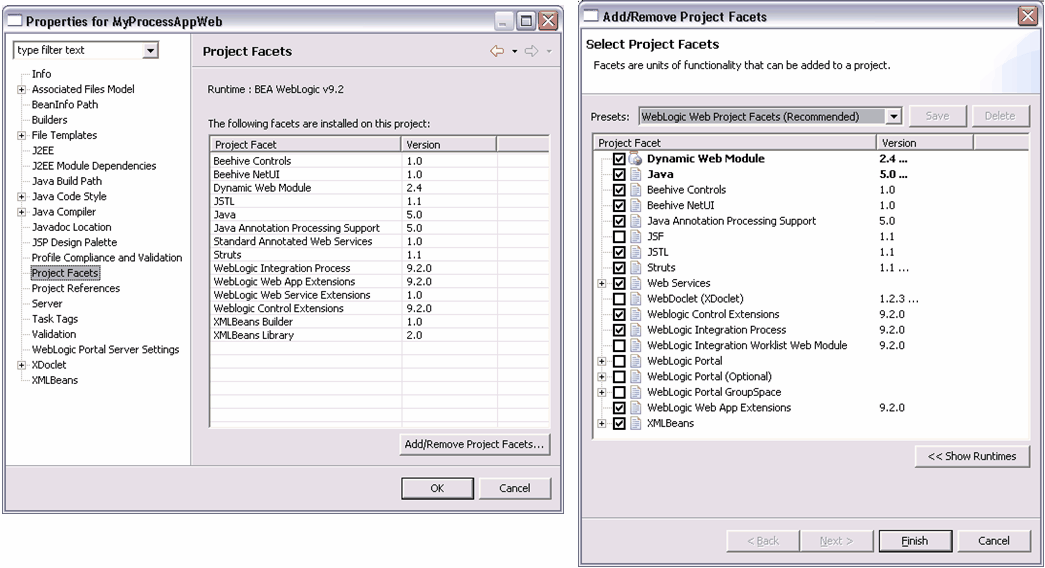
Perspectives define the initial set of Views and their associated layout in the Workbench. A perspective provides a set of functions. You can configure perspectives to define a collection of views, their layouts, and actions for specific tasks as in Figure 11.
The WebLogic Integration perspectives are as follows:
Select Window Open Perspective
Open Perspective Other... to obtain a list of perspectives as shown in Figure 12.
Other... to obtain a list of perspectives as shown in Figure 12.
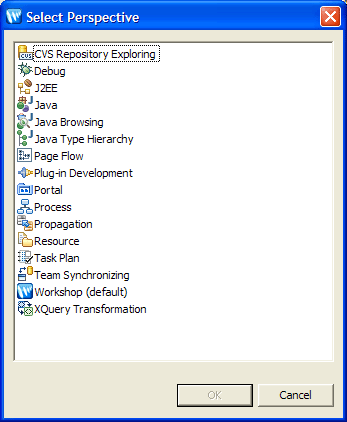
WebLogic Integration BPM allows the user to model and execute business processes that span multiple internal systems, external resources, and users. From the BPM perspective, the enterprise is a set of business services that are accessed through controls and can be orchestrated to model a business process. WebLogic Integration supports synchronous and asynchronous communications, and stateless and stateful processes.
As you design business processes using the graphical tools (Design view) in BEA Workshop for WebLogic Platform, it writes source code to a business process file. When you do need to write Java code, it is always available with single click access (Source view). The business process management functionality of WebLogic Integration enables corporate developers to develop, run, and maintain complex e-business processes that integrate existing enterprise systems, cross-enterprise applications, and end-user decision makers.
Table 3 lists the key features of WebLogic Integration business process management.
WebLogic Integration allows you to create a business process by simply dragging and dropping icons into a logical flow. This approach allows you to define the overall application logic without having to focus on implementation details. Figure 13 illustrates the visual business process editor.
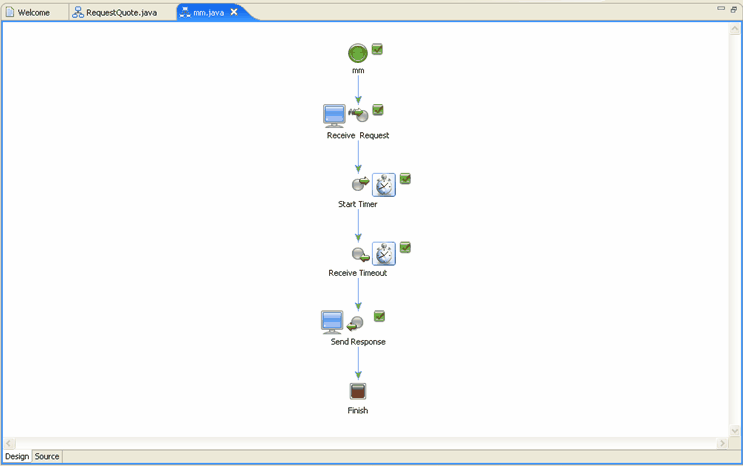
WebLogic Integration leverages Web services, asynchronous communication, and XML messaging at the platform level. At this level, these services can be used across internal and external integrations, giving application developers the tools to simplify development and integration of loosely coupled and asynchronous applications.
WebLogic Integration features native support for Web services including Web service security and reliable messaging. Web services can be invoked from within a WebLogic Integration business process and business processes can be exposed as a Web Service and made available as resources to other applications and application components.
A business process can be synchronous or asynchronous, based on the method that is used to invoke the process.
A synchronous process is invoked by a synchronous method, which is a Client Request with Return node. So, the synchronous process returns a response to the client after the process is executed. A synchronous business process can also contain asynchronous operations, but these must be added after the starting event in the process flow. That is, at run time, the asynchronous processes are executed after the synchronous starting event is completed.
An asynchronous process is invoked by an asynchronous method. In other words, the starting event in an asynchronous process is represented by an Asynchronous node. This includes business processes that are invoked via a Client Request node, an Asynchronous Subscription node, or one of several Client Request or Subscription nodes (that is, an Event Choice node). An asynchronous process can call synchronous or asynchronous methods without additional configuration.
You can also enable synchronous clients to interact with business processes that have asynchronous interactions with resources. For example, a synchronous WebLogic Workshop client, such as a JSP or Portal page that uses a Java control, might need to invoke a business process and then block. While the client is blocking, the business process may perform asynchronous activities, such as enqueueing a JMS message and waiting for a JMS receive, and then return the response to the client, after which the client unblocks.
To enable synchronous clients to interact with business processes that have asynchronous interactions with resources, you can create a business process with a Client Request node with an attribute property called sync/async callback name. This Client Request node property holds the name of the callback method used by the associated Client Response node. The Client Request and Client Response nodes delineate the activities (including asynchronous activities) that occur while the client is blocking. After setting this property, instead of generating a synchronous WSDL file, you need to use the Sync-Async Control to generate a sync-to-async WSDL file for the process.
Business processes can either be stateless or stateful. Typically, stateless business processes provide high performance because there is no overhead of maintaining state in a database through the transaction.
For a stateful business process, the state of the process is persisted in a database. Stateful business processes are used when the requirement for data reliability and recovery is high. However, since state is persisted, there could be an impact on the performance of the process. To minimize the adverse impact on performance, non-persistent stateful business processes can be defined at design-time. When you set the properties of the business process, three types of persistence can be defined. The persistence types are:
Always where state is always persisted in a database
Never where state is stored only in memory (and never in a database) and lasts only for the current session
On overflow where state is persisted only after a number (specified in the Max Bean in Cache deployment descriptor file) is reached
Business processes can expose their functionality to clients in several ways, including through WSDL files, Process controls, Service Broker controls, and JPD Proxies. Process controls and Service Broker controls can only be used between Workshop components. The Workshop component may be a Web service or a business process that is deployed on the same domain or different domain. Any Java client, including standalone Java applications, EJBs, JSPs and Servlets, can communicate with any business process using JPD proxies. When the clients use JPD proxies, they actually make Java method calls using Remote Method Invocation (RMI). In other words, a JPD proxy is a RMI client to a business process.
Data transformation enables you to translate between XML, non-XML, and Java data formats allowing you to rapidly integrate heterogeneous applications regardless of the format used to represent data. The data transformation functionality is available through a control and data transformations can be packaged as controls and re-used across multiple business processes and applications.
In BEA Workshop for WebLogic Platform business processes, XML data can be transformed using either XQuery expressions or eXtensible Stylesheet Language Transformations (XSLTs). While WebLogic Integration provides functionality for executing existing XSLTs in business processes, it also offers a new and easier path to data transformation through XQuery, a standards-based query language with the familiar simplicity of SQL-like expressions and a easy-to-use data mapping tool.
WebLogic Integration features a powerful visual data mapping tool, the XQuery Mapper, that gives you the ability to generate complex transformations easily with a drag-and-drop simplicity. Figure 14 illustrates the XQuery Mapper. The mapper functionality of BEA Workshop for WebLogic Platform enables the conversion of data of different types. For example, XML data can be transformed from XML data valid to one XML Schema to another XML document valid to a different XML Schema.
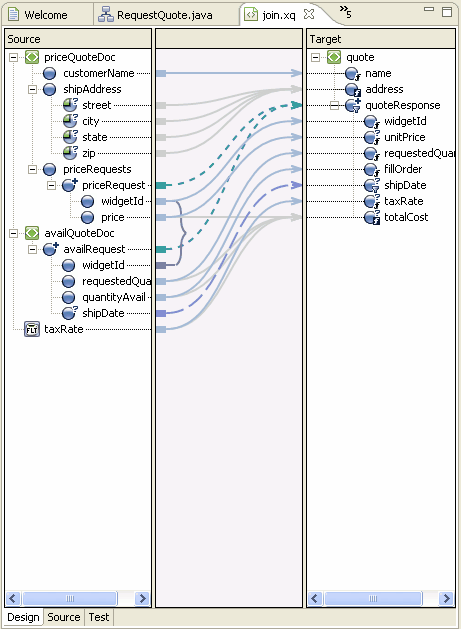
Table 4 lists the key features of data transformation:
WebLogic Integration implements a Message Broker that provides business processes with a channels-based publish and subscribe communication mechanism. This enables business processes to communicate in a loosely-coupled, anonymous manner using a business-naming paradigm. For example, a Purchase Order routing process can subscribe to the New Order Entered channel and as each new order message is published to that channel, the process is activated. Each business process can specify the channels to which it publishes and subscribes.
Publishers can broadcast messages without knowing who is going to receive these messages. The consumers of these messages can be any one of a couple of different types of listeners. Consumers, such as business processes and other back end resources, can subscribe to Message Broker channels. In this way, the Message Broker facilitates a loosely coupled interface. At run time, you can add new publishers and new subscribers.
The Message Broker supports Event Generators that can publish events from external sources to Message Broker channels. WebLogic Integration supports E-mail, File, JMS, HTTP, MQ Series, RDBMS, TIBCO RV, and Timer event generators. WebLogic Integration adapters, hosted in the Application Integration framework, publish events from packaged applications to channels. Table 5 lists the features of Message Broker:
Event generators trigger events in response to activities that occur in the systems associated with them. Each event generator is associated with a Message Broker channel. When a system event occurs, event generators publish this information using these channels. So, you need to configure a set of channel rules for each event generator.
The various types of event generators that are supported by WebLogic Integration are: File, Email, JMS, Timer, RDBMS, HTTP, MQ Series, and TIBCO RV. These event generators can be managed, deployed, and monitored using WebLogic Integration Administration Console. Event generators can be deployed both on standalone servers as well as on clusters.
For more information, see Event Generators in Managing WebLogic Integration Solutions.
File event generator polls files or directories on a local drive or FTP server and generates an event when an operation is performed on the file. The operation can be read, write, or append file. In addition, file manipulation operations such as copy, rename, and delete can also be monitored. The monitored files can be one of the following types: XmlObject, RawData (binary), or String. Details of the file operations are published on Message Broker channels as XML or binary objects.
|
|
Timer event generators create events at user designated times and publish the events to Message Broker channels. When the Timer event generator detects that a designated time has passed, it publishes a message to a Message Broker channel. The message content can be specified in the channel rules defined for the event generator. These are always XML messages.
|
|
RDBMS event generators can be used to generate an event when an insert, update, or delete action takes place on any database table associated with the event generator. The RDBMS event generator can also be used to query data available in a database. These updates are then published on Message Broker channels.
|
|
MQ Series is the messaging service queue provided by IBM. The MQ Series event generator polls this message queue for any messages and publishes them through Message Brokers channels.
In the WebLogic Integration product, BEA provides and supports MQ Series (now known as WebSphere® MQ) integration through the following options:
To learn more, see "WLI JMS Control" in Using Integration Controls available at
http://download.oracle.com/docs/cd/E13226_01/workshop/docs81/doc/en/integration/controls/controlsJMS.html
To learn more, see "Event Generators" in Managing WebLogic Integration Solutions available at
http://download.oracle.com/docs/cd/E13214_01/wli/docs85/manage/evntgen.html
To learn more, see "Async Binary Update Sample" available at
http://download.oracle.com/docs/cd/E13214_01/wli/docs81/sol_samples/async_binary.html
To learn more, see "MQ Series Control" in Using Integration Controls available at
http://download.oracle.com/docs/cd/E13226_01/workshop/docs81/doc/en/integration/controls/controlsMQ.html
To learn more, see BEA WebLogic Adapter for MQ Series 8.1 Documentation available at
http://download.oracle.com/docs/cd/E13207_01/wladapters/mq/docs81/index.html
The WebLogic Integration Control and Adapter rely on use of the MQ Series APIs. IBM has not currently certified the MQ Series APIs for BEA WebLogic Integration 8.1 and 8.5 products. To resolve issues for any aspect of the MQ Series Control or Adapter that is not part of the BEA WebLogic Integration product or is specific to IBM WebSphere MQ, the APIs might require a work around. JMS-based MQ integration, however, does not have the same support-related limitations as WebSphere MQ APIs. For a current list of BEA products that IBM has explicitly stated it supports in conjunction with WebSphere MQ, see the following URL:
|
|
TIBCO Rendezvous™ is a messaging software provided by TIBCO. It enables exchange of data across applications running on distributed platforms. TIBCO RV event generator listens for messages on a Rendezvous subject and raises events to the Message Broker on receiving the desired message. The messages are received in most formats supported by Rendezvous, converted to binary and then published on the Message Broker channels. These messages can be of type XML, String, and the TIBCO proprietary Rendezvous Message format.
Use of the TIBCO RV control and event generator with BEA WebLogic Integration in no manner confers or grants the right to use TIBCO Rendezvous including "dynamic libraries". In order to use such TIBCO products, the user of the TIBCO RV control and event generator must obtain a valid license from TIBCO. See http://www.tibco.com for information on how to obtain a licensed copy of Rendezvous.
|
WebLogic Integration provides a set of out-of-the box controls that enable you to start integration projects with a portfolio of resources. Figure 15 shows a sample menu of controls. These WebLogic Integration controls provide access to external resources to enhance developer productivity. WebLogic Integration applications also have access to external resources through the WebLogic Workshop high-level controls. BEA Workshop for WebLogic Platform provides a consistent mechanism for interacting with resources across all BEA Workshop for WebLogic Platform, WebLogic Integration, and WebLogic Portal components.

WebLogic Integration controls are now based on the Apache Beehive open source framework (http://beehive.apache.org/). Beehive is a lightweight component framework that helps programmers encapsulate application logic and leverage metadata annotations into their programming model. Developers can create custom controls or use the pre-built system controls.
| Note: | Integration controls are available in WebLogic Workshop only if you are licensed to use WebLogic Integration. |
The following sections describe the controls delivered with WebLogic Integration:
The Application View control allows Web Services or business processes to access an enterprise application using an Application View. This control is designed to make it easy for you to use an existing, deployed application view from within your business process. The Application View must be created using Application Integration Design Console before it can be referenced using an Application View control.
The Dynamic Transformation control provides a business process with the ability to dynamically select which transformation is invoked at run-time. So, the format of the input and output data need not to be specified during business process design-time. Instead, the business process identifies the input data and transforms it to the desired output format during run-time.
The Dynamic Transformation control uses transformations that have already been created, such as those transformations created with the Transformation control. You need to make sure that the required transformation has been defined and tested before you create the Dynamic Transformation control. This control has different base methods that have been defined for various transformation types like XQuery, XSL, and MFL. Custom methods for executing different types of transformations can also be created. Using these methods, the transformation type is identified and executed at run-time.
The ebXML protocol (Electronic Business using eXtensible Markup Language) is a modular suite of specifications that enables enterprises of any size and in any geographical location to conduct business over the Internet. It is sponsored by UN/CEFACT and OASIS. To learn about ebXML, see http://www.ebXML.org.
The ebXML control enables WebLogic Workshop business processes to exchange business messages and data with trading partners by using the ebXML protocol. This control supports both the ebXML 1.0 and ebXML 2.0 messaging services.
The Email control enables WebLogic Integration business processes to send e-mail to a specific destination. To receive e-mail, you must use the Email event generator. The event generator then publishes incoming e-mails to Message Broker channels.
You use WebLogic Integration Administration Console to create and manage event generators.
A File control is used to perform operations on a file. It allows business processes to read, write, or append to a file in a file system. In addition, the File control supports file manipulation operations such as copy, rename, and delete. You can also retrieve a list of the files stored in a specific directory. The files can be one of the following types: XmlObject, RawData (binary), or String. The methods available to a File control depend on the type of data contained in the file. For a file of type String or XmlObject, you can specify the character set encoding. When processing a file, you can specify the delimiter for a file as the record size. If no delimiter is specified, the file is processed one line at a time. In the case of files of type String, you can also specify number of bytes or any character as a delimiter.
HTTP protocol is used for communication between a client and a server. The HTTP control is used to provide outgoing HTTP access to WebLogic Workshop clients. This control can be used to work with HTTP requests and process responses. The HTTP control supports the Get and Post request methods for data transfer. By using the Get mode, you can send your business data along with the URL. By using the Post mode, you can send large amount of data like Binary, XML and String documents to the server within the body of the request. You can specify HTTP control properties in an annotation, or pass dynamic properties via an XML variable. Using this control, you can send an HTTP or HTTPS (Secure HTTP) request to a URL and receive specific HTTP response header and body data.
The Message Broker resource provides a publish and subscribe message-based communication model for WebLogic Integration business processes, and includes a powerful message filtering capability. For more information, see Message Broker.
Two Message Broker controls, Publish and Subscription, are available, in WebLogic Workshop, to your business processes. The Publish control is used to publish messages to Message Broker channels. You bind the Message Broker channel to the Publish control when you declare the control, but it can be overridden dynamically. You can add additional methods to your extension (subclass) of the Message Broker Publish control.
The Subscription control is used to dynamically subscribe to channels and receive messages. You bind the channel and optionally, an XQuery expression for filtering messages, when you create an instance of the control for your business process. The bindings cannot be overridden dynamically. The Subscription control interface includes methods that allow your business process to subscribe to and unsubscribe from the bound Message Broker channel.
In addition to the dynamic subscriptions you design at Control nodes in your business process, you can design static subscriptions at Start nodes to receive messages from Message Broker channels. That is, a business process can be initiated by subscribing synchronously or asynchronously to a Message Broker channel and starting via an event.
MQ Series is a messaging service queue provided by IBM that enables message transfer between applications. The sending application puts a message on a Queue, and the receiving application gets the message from the Queue.
The MQ Series control enables WebLogic Integration business processes to send and receive messages using MQ Series queues. Using the MQ Series control, you can send and receive Binary, XML, and String messages. You can specify MQ Series control properties while configuring the MQ Series control or dynamically at run-time. By default, the MQ Series control handles transactions implicitly for each PUT and GET method individually, without having to set an explicit transaction boundary. However, transaction boundaries can also be set explicitly.
Using SSL, you can enable both one way authentication (server-side) and two-way authentication (client-side).
In the WebLogic Integration product, BEA provides and supports MQ Series (now known as WebSphere® MQ) integration through the following options:
BEA WebLogic Integration JMS Control within the WebLogic Workshop IDE
To learn more, see "WLI JMS Control" in Using Integration Controls available at http://download.oracle.com/docs/cd/E13226_01/workshop/docs81/doc/en/integration/controls/controlsJMS.html
JMS Event Generators in BEA WebLogic Integration Administration Console
To learn more, see "Event Generators" in Managing WebLogic Integration Solutions available at http://download.oracle.com/docs/cd/E13214_01/wli/docs81/manage/evntgen.html
Asynchronous Sample Illustrating the use of JMS with MQ Series
To learn more, see "Async Binary Update Sample" available at http://download.oracle.com/docs/cd/E13214_01/wli/docs81/sol_samples/async_binary.html
BEA WebLogic Integration MQ Series Control within the WebLogic Workshop IDE
To learn more, see "MQ Series Control" in Using Integration Controls available at http://download.oracle.com/docs/cd/E13226_01/workshop/docs81/doc/en/integration/controls/controlsMQ.html
To learn more, see BEA WebLogic Adapter for MQ Series 8.1 Documentation available at http://download.oracle.com/docs/cd/E13207_01/wladapters/mq/docs81/index.html
The WebLogic Integration Control and Adapter rely on use of the MQ Series APIs. IBM has not currently certified the MQ Series APIs for BEA WebLogic Integration. To resolve issues for any aspect of the MQ Series Control or Adapter that is not part of the BEA WebLogic Integration product or is specific to IBM WebSphere MQ, the APIs might require a work around. JMS-based MQ integration, however, does not have the same support-related limitations as WebSphere MQ APIs. For a current list of BEA products that IBM has explicitly stated it supports in conjunction with WebSphere MQ, see the following URL:
http://www-306.ibm.com/software/integration/mqfamily/platforms/supported/wsmq_for_solaris_5_3.html
The Process control is used to send requests to, and receive callbacks from another business process. The Process control is typically used to call a sub process from a parent process. Process control invocations are Java Remote Method Invocation (RMI) calls.
You can create a Process control by inserting it from the list of Integration controls, or you can generate the Process control using the business process file. When you insert the Process control, you can specify the target business process and the start method associated with that business process. Optionally, you can use the Query Builder to decide at run-time which one of multiple subprocesses can be called by the Process control. When you generate the Process control using the process file, a control extension file is automatically created for that control. Double-click this control extension file (as displayed in the Application tab) to view the control in the Design View, or drag it to the Data Palette and use any of the methods associated with this Process control.
RosettaNet is a business protocol that enables enterprises to conduct business over the Internet. To learn about RosettaNet, see http://www.rosettanet.org.
The RosettaNet control enables WebLogic Workshop business processes exchange business messages and data with trading partners using the RosettaNet protocol. You can use the RosettaNet control only in initiator business processes to manage the exchange of RosettaNet business messages with participants. The RosettaNet control supports RosettaNet version 1.1 and 2.0 of the implementation framework. For more information, see Trading Partner Integration.
The Service Broker control allows a business process to send requests to and receive callbacks from another business process or business process defined in a Web Service Description Language (WSDL) file.
The Service Broker Control has been included in WebLogic Integration 9.2 for backward compatibility with WebLogic Integration 8.1. The Service Broker Control in 9.2 does not support the latest version of web services standards, such as WS-Addressing, WS-Security, and SOAP 1.2. In order to take advantage of the latest web services standards, please use the web service control delivered with BEA Workshop for WebLogic Platform.
The Task control and the Task Batch control are Worklist controls that enable you to introduce user assigned tasks and task management to WebLogic Integration, so you can build a Worklist system. These Worklist controls enable the automated manipulation, creation, and management of Tasks. For more information, see Worklist System.
TIBCO® Rendezvous is a messaging software provided by TIBCO. It enables exchange of data across applications running on distributed platforms. TIBCO RV control is a WebLogic Integration control that enables seamless connection to, and transfer of data with TIBCO Rendezvous using the Rendezvous daemon. It enables communication via many of the features provided by TIBCO Rendezvous, including Certified Message Delivery and Distributed Queue. The sending and receiving applications can be on multiple platforms, as long as the Rendezvous daemon is running on the host machine, or is remotely accessible to the host.
Use of the TIBCO RV control and event generator with BEA WebLogic Integration in no manner confers or grants the right to use TIBCO Rendezvous including "dynamic libraries". In order to use such TIBCO products, the user of the TIBCO RV control and event generator must obtain a valid license from TIBCO. See http://www.tibco.com for information on how to obtain a licensed copy of Rendezvous.
The TPM (Trading Partner Management) control provides WebLogic Workshop business processes and Web services with query (read-only) access to trading partner and service information stored in the TPM repository. Information like trading partner name or business ID, default trading partner, basic and extended trading partner properties, default bindings (ebXML or RosettaNet), services, service profiles, and service profile bindings (ebXML, RosettaNet, or Web service bindings) can be queried and retrieved from the TPM repository. However, only active profile services and active trading partners can access this repository. Since access to the repository is read-only, you cannot modify trading partner and service information. These details can only be modified by using WebLogic Integration Administration Console.
Java Message Service (JMS) is a Java API for communicating with messaging systems. The WLI JMS control enables WebLogic Workshop business processes to easily interact with messaging systems that provide a JMS implementation.
Each WLI JMS control is associated with a specific facility of the messaging system. Once a WLI JMS control is defined, business processes can use it like any other WebLogic Workshop control.
The XML MetaData Cache control is used in business processes to access and retrieve XML metadata maintained in XML MetaData Cache. This cache is managed by WebLogic Integration Administration Console or the MBean API, which allows users to create their own NetUI-based consoles. The XML MetaData Cache is a global, domain-wide cache. So, data maintained in the cache can be accessed by any business process that is deployed in that domain. The cache can also be used for sharing data within a cluster. The cache is primarily used to maintain configuration metadata. Data is stored as key-value pairs where key is of type String and the value contains XML data. Data from the cache is made available permanently through file-based storage. For each XML document that is added to the cache, a new XML MetaData Cache file is created. The XML MetaData Cache control in a business process uses the key to retrieve XML metadata associated with the key value, from the cache.
WebLogic Integration delivers rapid access to integration with business users through the Worklist system. The Worklist system supports capabilities to manage users, groups, and roles and manage the routing of tasks to people within an enterprise. It enables people to collaborate in business processes including assigning tasks, tracking the status of tasks, handling approvals, and more. Actions such as receiving, approving, modifying, and routing documents are integral to the flow of work. The documents that often accompany work activities provide the background required for people to complete tasks.
A task is the central element within Worklist. In Worklist 9.2, we allow designers can string together tasks that are made up of multiple steps into a Task Plan. Each step in a task plan represents a distinct phase toward the completion of an overall business goal, such as approving a loan request. As business users work on each step, they can choose between one or more actions whose completion will advance them to the appropriate next step based on the rules and conditions defined in the Task Plan. WebLogic Integration provides a drag-and-drop design environment for you to define Task Plans that will be available to business users. The design canvas is delivered as a "perspective" within BEA Workshop for WebLogic Platform, as shown in Figure 16.
Business processes can deal with task instances via controls and message broker. The Task Control can be used to interact with a single task instance in a business process. The Task Batch Control which replaces the Task Worker Control in 8.x, can be used to interact with multiple task instances with queries and bulk operations. In WebLogic Integration 9.2, the Worklist events related to any task instance are published to a Message Broker channel. This allows a business process to subscribe to and filter specific events to act on them, enabling a loosely-coupled integration between the Worklist and the business process.
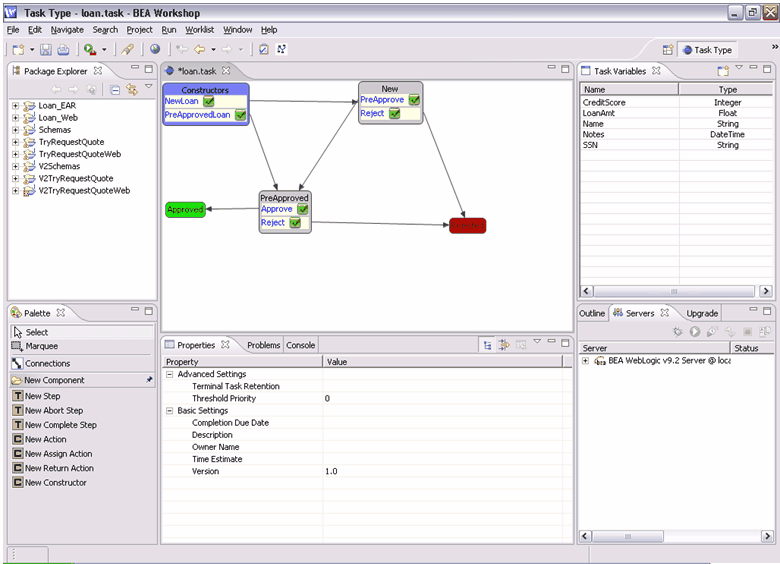
As you create your Task Plan, WebLogic Integration automatically generates an end-user facing form that can be used to capture data from business users. It is possible to customize these forms to better suit the look and feel of your environment. Figure 17 shows an example of a generated form.
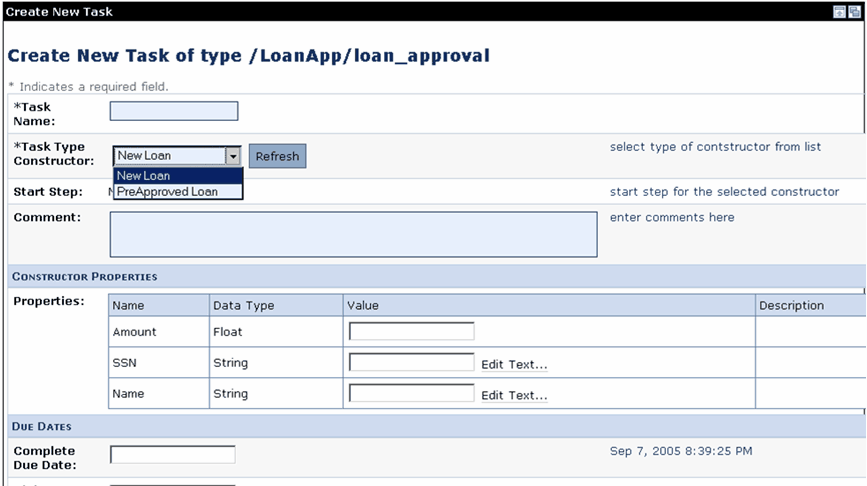
WebLogic Integration also contains a set of out-of-the-box portlets that business users can use to manage their tasks. There is a User and a Manager portal. The Worklist User Portal provides facilities for end-users to claim tasks, alter task properties and take actions on tasks. The Worklist Manager Portal allows managers to supervise the work done by the users that they manage. The Manager Portal provides peer group views of tasks, their type, and status. It also allows the manager to view the details of subsets of tasks. Figure 18 shows the Worklist User Portal and Figure 19 shows the Worklist Manager Portal. You can customize these portals or embed one or more of these portlets into your own portal.


For more information on Worklist, see About WebLogic Integration Worklist.
WebLogic Integration allows you to automate and manage relationships with your trading partners so that you can streamline your business processes with customers, suppliers, distributors, and other partners to get a top-down a view of business transactions across the value chain.
Table 7 summarizes WebLogic Integration's trading partner integration capabilities.
Figure 20 shows basic interactive business processes between trading partners. The Buyer business process sends an order to the Seller using an agreed-upon business protocol (ebXML or RosettaNet). The Seller business process receives the request, writes the order to a database, receives an invoice from an internal back-end system, and then sends the invoice to the Buyer using the same business protocol.
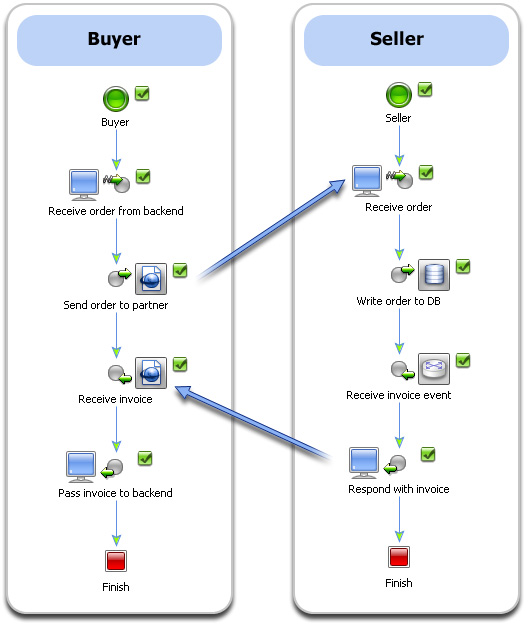
Figure 21 shows the Trading Partner Management home page in the WebLogic Integration Administration Console, which allows administrators to manage trading partner profiles, security certificates, protocol bindings, services, message tracking and auditing, trading partner activity, system defaults, and importing and exporting trading partner profile information.

WebLogic Integration provides an application integration framework comprised of the Application View control in the Workshop environment, the Application Integration Design Console, and support for pre-built BEA and custom adapters. The application integration framework allows you to link existing systems and new applications using standards-based architecture to host J2EE Connector Architecture (J2EE-CA)-based adapters.
With the Application View control, you can invoke application view services both synchronously and asynchronously, and start a new business process when an EIS event occurs. In both the service and event cases, the developer uses XML and mapping tools to interact with the Application View control. The developer need not understand the particular protocol or client API for the enterprise application.
The Application Design Console allows integration specialists to configure adapters without coding, including application introspection, abstracting application logic, and inputs and outputs through Application Views.
WebLogic Integration provides a set of J2EE CA-based adapters to integrate with back-end systems, including packaged business applications from major vendors. WebLogic integration supports leading enterprise applications and technologies with pre-built BEA WebLogic Adapters for Peoplesoft, SAP, Siebel, and Oracle Applications. These adapters are exposed to the BEA Workshop for WebLogic Platform framework via the Application View control. To configure an application view control, the application expert uses the WebLogic configuration tool to configure the adapter and define relevant high-level business operations and events.
Table 8 lists the key features of application integration.
|
|
|
WebLogic Integration provides a simplified secure browser-based administration console for run-time management and administration analytics. The WebLogic Administration Console allows centralized configuration, maintenance, and monitoring of integrated resources, including audit trails as well as associated security and role information. It is extensible with JMX interfaces to third-party tools. The WebLogic Integration Administration Console is designed for the applications administrator, that is, an administrator who needs an integration-focused view of business processes, messaging activity, and monitoring of deployed applications.
WebLogic Integration separates run-time administration from offline analytics by maintaining two logical database stores. The online administration database contains run-time data about the integration engine, business process states, and message history. This repository is designed for performance—to scale and to retrieve information as quickly as possible while maintaining its data in a optimized format. According to configurable archiving policies, this online repository is periodically archived to an offline data store. Data archiving enables analysis of process data by third-party tools through SQL to archived databases. Task history is maintained in a separate offline store (called the Worklist reporting store) from the JPD state. This store can either be the default reporting store provided with the Worklist, or a custom reporting store that you provide.
Using the WebLogic Integration Administration Console, you can monitor and manage process flows, message broker activities, application views, and trading partners in one place. Figure 22 illustrates the WebLogic Integration Administration Console.
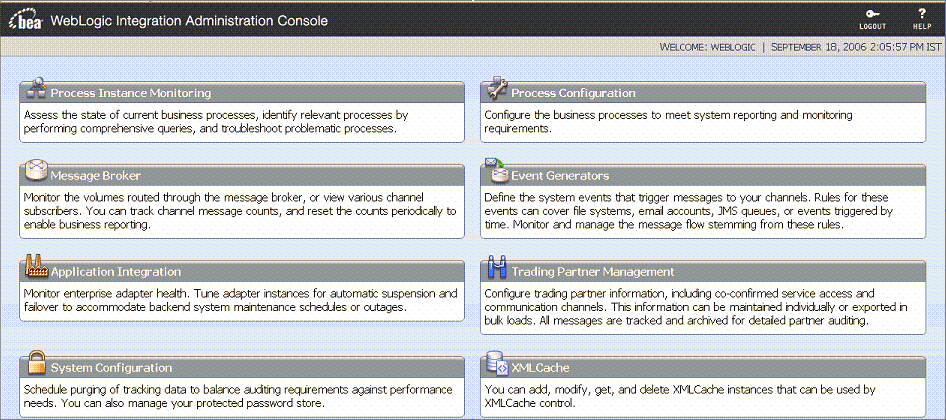
The WebLogic Integration Administration Console addresses the following operations, management, and administration features as listed in Table 9
You can use the Process Instance Monitoring resource to view summary statistics that reflect system health, view status and statistics of process instances, view an interactive or printable process instance graph and so on. The information displayed in the Process Instance Monitoring module is based on the tracking data stored in the run-time database. A combination of system-level and process-level properties control the type of data that is available.
You can configure a process to archive the variable values in the process. This can be done both at the system level or at the individual process level. So, it is possible to track the value that was assigned to the process variables while the process is running and track the variable values after the process completes, terminates, or aborts.
A process instance that calls another process instance using a Process control is deemed to have a parent-child relationship. You can use WebLogic Integration Administration Console to monitor parent as well as child processes and navigate between these processes. However, the parent-child navigation functionality is limited to instances invoked via the Process control. Instances started by the Service Control or Service Broker Control are not identified as child instances.
For more information, see "Process Instance Monitoring" in Managing WebLogic Integration Solutions available at http://download.oracle.com/docs/cd/E13214_01/wli/docs81/manage/processmonitoring.html
You can use the Process Configuration module to:
For more information, see "Process Configuration" in Managing WebLogic Integration Solutions available at http://download.oracle.com/docs/cd/E13214_01/wli/docs81/manage/processconfig.html
The System Configuration module in WebLogic Integration Administration Console is used to set general configuration and security parameters. You can configure security for processes (both authorization and execution policies), channels, and trading partner communications. You can use this module to:
Events that are generated by a process instance and a Worklist task instance can be tracked. Similarly, trading partner message history can also be tracked.
The tracking level can be set to optimize performance and meet system requirements. The tracking data is maintained in the run-time database. The reporting data stream can be enabled or disabled. If the reporting data stream is enabled, the specified reporting database is populated by a near real-time data stream. Because the reporting database is populated by a near real-time stream, it is possible to see a snapshot of the data for process instances that contain partial data.
In order to optimize performance, the amount of tracking data stored in the run-time database should be kept to a minimum. To help ensure this, data is periodically purged from the run-time database, as set by an administrator. If the data is required for reporting and analysis, the administrator can enable the transfer of tracking data suitable for reporting to an offline database.
The password store provides for the secure storage of the passwords used by controls, event generators, and other WebLogic Integration components. Each required password is defined in the password store and associated with a password alias. This alias can then be referenced in the annotations of process definitions (*.jpd), control extensions (*.jcx), and event generator configuration files (wliconsfig/*EventGen.xml).
The application integration configuration, debug status (enabled or disabled), JMS connection factory, and repository root directory can be managed. In addition, you can set, edit, and view the worklist task creation role. This is the role that is authorized to create worklist tasks.
For more information, see "System Configuration" in Managing WebLogic Integration Solutions available at http://download.oracle.com/docs/cd/E13214_01/wli/docs81/manage/system.html.
Business Process Execution Language for Web services (BPEL) is a Web service orchestration standard that can be used to define transactional business processes. With BPEL, activities that are a part of a business process can be expressed as a Web service. These services can then be orchestrated to ensure control over the entire process. Processes written in BPEL are stored as .bpel files and can be run on any platform or product that is compliant with the BPEL specification.
BPEL 1.1 is a draft specification proposed by BEA, IBM, and Microsoft. However, this specification will be superseded by BPEL 2.0, which is expected to be formalized as a standard under the aegis of OASIS.
BPEL Import and Export tools are provided to enable design-time interoperability with other tools that support the BPEL 1.1 specification. However, in certain cases, run-time semantics are not guaranteed, especially when there are functional mismatches between business process and BPEL, or between various expression languages including differences between XQuery, XPath, and XSLT. Run-time semantics are also not guaranteed when they involve vendor extensions, external artifacts, or environment settings. For the above reasons, review and modify the imported and exported files based on requirements, to make sure that they run properly.
You can use the BPEL Import tool to import a BPEL 1.1 compliant file into a business process file, where it can be used in the BEA Workshop for WebLogic Platform design environment. While the main orchestration logic of the BPEL file is imported into a business process file, it is not expected that the imported business process file will be immediately executable in BEA Workshop for WebLogic Platform. You will need to manipulate the business process file in WebLogic Integration Eclipse IDE before it can run as a business process.
You can use the BPEL Export tool to export the semantics of a business process file into BPEL where it can be used in a BPEL-compatible design environment. BPEL code exported using the BPEL Export tool is BPEL 1.1 compliant, and can be used in design environments compliant with BPEL 1.1. While the main orchestration logic of the business process is exported to BPEL, it is not expected that the exported BPEL file will be immediately executable in the target environment. You will need to manipulate the BPEL file in the target environment to get the exported process to run, or to get close to the run-time semantics.
Table 10 provides links to useful information in the WebLogic Integration documentation set, such as topics that teach you how to use the tools for implementing, deploying, and managing integration applications and resources.
Tutorial: Building Your First Business Process, available in the BEA Workshop for WebLogic Platform Help at:
http://download.oracle.com/docs/cd/E13226_01/workshop/docs92/doc/en/integration/tutorial/tutWLIProcessIntro.html
Guide to Business Processes, available in the BEA Workshop for WebLogic Platform online help at:
|
|
Building Your First Data Transformation Tutorial, available in the BEA Workshop for WebLogic Platform Help at:
http://download.oracle.com/docs/cd/E13226_01/workshop/docs92/doc/en/integration/dttutorial/tutWLIDataTransIntro.html
Guide to Data Transformation, available in the BEA Workshop for WebLogic Platform Help at:
|
|
Using Integration Controls, available in the BEA Workshop for WebLogic Platform Help at:
|
|
Using the Worklist System, available at:
Tutorial: Building a Worklist Application, available at:
|
|
Introducing Trading Partner Integration, available at:
|
|
RosettaNet Control, available in the BEA Workshop for WebLogic Platform Help at:
http://download.oracle.com/docs/cd/E13226_01/workshop/docs81/doc/en/integration/controls/controlsRosettaNet.htm
ebXML Control, available in the BEA Workshop for WebLogic Platform Help at:
http://download.oracle.com/docs/cd/E13226_01/workshop/docs81/doc/en/integration/controls/controlslebXML.html
TPM Control, available in the BEA Workshop for WebLogic Platform Help at:
|
|
Managing Integration Solutions, available at:
|
|
Introducing Application Integration, available at:
Using Application Integration Design Console, available at:
|
|
Developing Adapters, available at:
|
|
BEA WebLogic Adapters 9.2 online documentation, available at the following location, a set of online manuals for all BEA package adapters for enterprise application integration:
|
|
WebLogic Integration 9.2 Upgrade Guide, available at:
|
|
Deploying WebLogic Integration Solutions, available at:
|


|